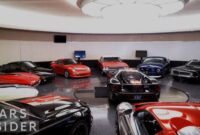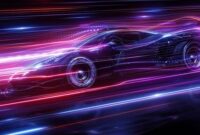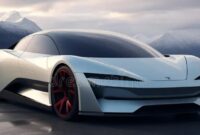Ferrari vs Lamborghini vs McLaren: Who Builds the Best Supercar?
Introduction
The world of supercars is a playground of extreme engineering, breathtaking design, and exhilarating performance. Among the titans of this elite automotive realm stand three legendary manufacturers: Ferrari, Lamborghini, and McLaren. Each brand has a rich heritage, a unique philosophy, and a devoted following that passionately argues which one builds the best supercar.
Ferrari, the emblem of Italian racing heritage and finesse, is renowned for its combination of powerful engines, elegant design, and racing pedigree. Lamborghini, the rebellious and flamboyant brand, is synonymous with bold styling, aggressive performance, and raw emotion. McLaren, the British innovator with roots in Formula 1, is celebrated for cutting-edge technology, lightweight construction, and track-focused engineering.
This article will dissect these three automotive giants across various dimensions including history, design philosophy, engineering excellence, performance, innovation, and brand culture. It will compare iconic models, evaluate driving dynamics, and explore how each brand caters to different aspects of the supercar experience. By the end, readers will gain a thorough understanding of what sets Ferrari, Lamborghini, and McLaren apart—and ultimately, who builds the best supercar.
1. Brand Histories and Heritage
Ferrari
Founded by Enzo Ferrari in 1939, Ferrari’s roots are deeply embedded in motorsport, especially Formula 1. The brand’s early success on the racetrack established its reputation for performance and engineering excellence. Ferrari’s road cars have always balanced racing technology with luxury, making them highly desirable. Over decades, Ferrari has produced numerous legendary models such as the 250 GTO, F40, Enzo, and LaFerrari, cementing its status as a premier supercar maker.
Lamborghini
Lamborghini was established in 1963 by Ferruccio Lamborghini, an industrialist with a passion for creating refined yet brutally powerful cars to rival Ferrari. Known for their striking and aggressive design language, Lamborghinis broke conventions with wedge-shaped bodies and roaring V12 engines. Iconic models like the Miura, Countach, Diablo, and Aventador showcase Lamborghini’s flair for boldness and extravagance. The brand remains a symbol of unrestrained excess and flamboyance.
McLaren
McLaren began as a racing team in 1963 and entered Formula 1 in 1966. It wasn’t until the 1990s that McLaren transitioned into road cars with the legendary McLaren F1, which set new standards for speed and technology. Today, McLaren focuses on integrating its racing expertise into production supercars such as the P1, 720S, and Artura. Known for cutting-edge carbon fiber technology and aerodynamics, McLaren represents the fusion of precision engineering and performance.
2. Design Philosophy and Aesthetics
Ferrari
Ferrari’s design approach combines elegance with aerodynamic efficiency. The brand often collaborates with renowned design houses such as Pininfarina and Centro Stile Ferrari. Ferrari’s supercars feature flowing lines, sculpted surfaces, and a purposeful yet refined appearance that exudes Italian sophistication. The design balances beauty and function, often using active aerodynamics subtly integrated into the bodywork.
Lamborghini
Lamborghini’s designs are loud, aggressive, and unapologetically angular. Their signature sharp edges, low stance, and dramatic scissor doors create an instant visual impact. Lamborghini embraces a futuristic and rebellious aesthetic that challenges traditional supercar design norms. The aggressive styling reflects the brand’s philosophy of maximalism and extroversion, making Lamborghinis stand out unmistakably on the road.
McLaren
McLaren’s design language is centered on function-driven minimalism. The company’s expertise in aerodynamics and lightweight materials influences their clean, purposeful shapes. Their cars often feature dihedral doors and smooth, flowing surfaces designed to optimize airflow and downforce. McLaren’s aesthetic is understated compared to Ferrari and Lamborghini but conveys advanced technology and precision.
3. Engineering and Performance
Engines and Powertrains
• Ferrari mostly employs naturally aspirated V8s and V12s, recently transitioning to turbocharged V8s for efficiency without sacrificing power. The LaFerrari hybrid combines a V12 engine with electric motors to achieve over 950 horsepower.
• Lamborghini focuses heavily on naturally aspirated V10 and V12 engines that emphasize raw power and sound. The Aventador’s 6.5L V12 produces 730 hp, delivering an unmistakable roar and fierce acceleration. The Huracán uses a V10, blending performance with slightly better efficiency.
• McLaren employs high-revving twin-turbocharged V8 engines that prioritize lightweight and efficiency. The McLaren P1 and Artura use hybrid powertrains combining electric motors for instant torque and combustion engines for top-end power.
Chassis and Materials
McLaren is a pioneer in carbon fiber monocoque chassis construction, offering superior rigidity and reduced weight. Ferrari and Lamborghini also extensively use carbon fiber and aluminum alloys, but McLaren’s racing heritage gives it an edge in advanced materials technology.
Handling and Driving Dynamics
Ferrari delivers a balanced driving experience blending comfort, precision, and driver engagement. It’s known for superb steering feel and responsive throttle control.
Lamborghini leans towards an aggressive, visceral driving style with a focus on outright speed and spectacle. Its all-wheel-drive systems and sharp handling make it a thrill on the straights and corners.
McLaren emphasizes lightweight agility and aerodynamic downforce. Its cars provide razor-sharp handling and exceptional grip, often feeling more at home on a race track than the street.
Transmission
All three brands use sophisticated dual-clutch automatic transmissions allowing lightning-fast gear shifts. McLaren and Ferrari have pioneered advanced electronic controls that enhance both performance and drivability.
4. Innovation and Technology
Ferrari
Ferrari integrates cutting-edge technology from its F1 program, including advanced traction control, hybrid powertrains, and active aerodynamics. Ferrari’s F1-derived technologies improve safety and handling while delivering exhilarating performance.
Lamborghini
Lamborghini focuses on raw power but also embraces modern tech such as all-wheel drive, dynamic steering, and active aero elements. Its ‘Lamborghini Dinamica Veicolo Integrata’ (LDVI) system actively manages chassis dynamics for improved stability.
McLaren
McLaren is arguably the most technologically advanced of the three, with extensive use of carbon fiber, active aerodynamics, hybrid systems, and Formula 1-inspired electronics. McLaren’s Proactive Chassis Control II adjusts suspension and aerodynamics in real-time for optimal performance.
5. Brand Culture and Ownership Experience
Ferrari
Ferrari ownership is tied to racing heritage, Italian elegance, and exclusivity. Ferrari owners often join exclusive clubs, events, and racing experiences that deepen brand loyalty. The company’s customer programs provide bespoke customization and track support.
Lamborghini
Lamborghini owners embrace flamboyance and passion. The brand’s culture is about boldness and spectacle, reflected in exclusive events like the Lamborghini Polo Challenge and special edition models. The brand connects with a younger, more extroverted audience.
McLaren
McLaren appeals to enthusiasts who value precision and technology. Ownership often includes track days, driving experiences, and direct access to McLaren’s racing expertise. The brand cultivates a community focused on performance and innovation.
6. Comparing Iconic Models
Ferrari F8 Tributo vs Lamborghini Huracán EVO vs McLaren 720S
• Performance: The F8 Tributo boasts a 710 hp turbo V8, 0-60 mph in 2.9 seconds. The Huracán EVO’s naturally aspirated V10 delivers 631 hp, 0-60 mph in 2.9 seconds. The 720S’s twin-turbo V8 produces 710 hp, 0-60 mph in 2.7 seconds.
• Handling: The 720S is the sharpest and most track-focused. Ferrari balances sharp handling with comfort, while Lamborghini favors aggressive and thrilling dynamics.
• Design: Ferrari’s sleek curves contrast with Lamborghini’s aggressive angles and McLaren’s aerodynamic minimalism.
Conclusion
Choosing the best supercar builder among Ferrari, Lamborghini, and McLaren depends largely on what qualities a buyer values most. Ferrari offers a perfect blend of racing heritage, luxury, and refined performance. Lamborghini delivers bold, aggressive styling paired with raw power and a visceral driving experience. McLaren focuses on cutting-edge technology, lightweight construction, and track-oriented dynamics.
Each brand excels in different ways, and their supercars appeal to distinct personalities and driving preferences. Whether you desire the elegance and legacy of Ferrari, the drama and flair of Lamborghini, or the precision and innovation of McLaren, these manufacturers represent the pinnacle of automotive excellence.
Ultimately, the answer to who builds the best supercar is subjective. It depends on whether you value tradition or innovation, style or substance, comfort or aggression. One thing is certain: Ferrari, Lamborghini, and McLaren will continue pushing boundaries, thrilling drivers, and defining what it means to be a supercar in the decades to come.



